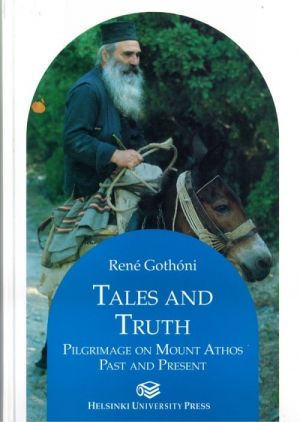This book is the sequel to the same author's Paradise within Reach: Monasticism and Pilgrimage on Mount Athos (Helsinki, 1993) which I reviewed in Sobornost, 16:2 (1994), 94-7.[2] In the earlier book Gothoni asked such questions as 'What does it mean to be a monk?' and 'Why do laymen come to Athos?' The answers, based on interviews with a cross-section of monks and a cross-section of pilgrims, enabled him to build up an accurate picture of what life is like on the Holy Mountain today for both its inhabitants and their visitors. In this second book he devotes all but the last forty pages to examining a cross-section of travellers' tales from the past. For convenience he divides them into 'Early Accounts' (1420-1560), 'Travellers' Tales' (1677-1801), and 'Critical Tales' (1837-1954), but for practical purposes there is no real difference between them. What this book lacks is the parallel portrait of the monks of the time except in so far as it is provided by the travellers.
This book is the sequel to the same author's Paradise within Reach: Monasticism and Pilgrimage on Mount Athos (Helsinki, 1993) which I reviewed in Sobornost, 16:2 (1994), 94-7.[2] In the earlier book Gothoni asked such questions as 'What does it mean to be a monk?' and 'Why do laymen come to Athos?' The answers, based on interviews with a cross-section of monks and a cross-section of pilgrims, enabled him to build up an accurate picture of what life is like on the Holy Mountain today for both its inhabitants and their visitors. In this second book he devotes all but the last forty pages to examining a cross-section of travellers' tales from the past. For convenience he divides them into 'Early Accounts' (1420-1560), 'Travellers' Tales' (1677-1801), and 'Critical Tales' (1837-1954), but for practical purposes there is no real difference between them. What this book lacks is the parallel portrait of the monks of the time except in so far as it is provided by the travellers.













